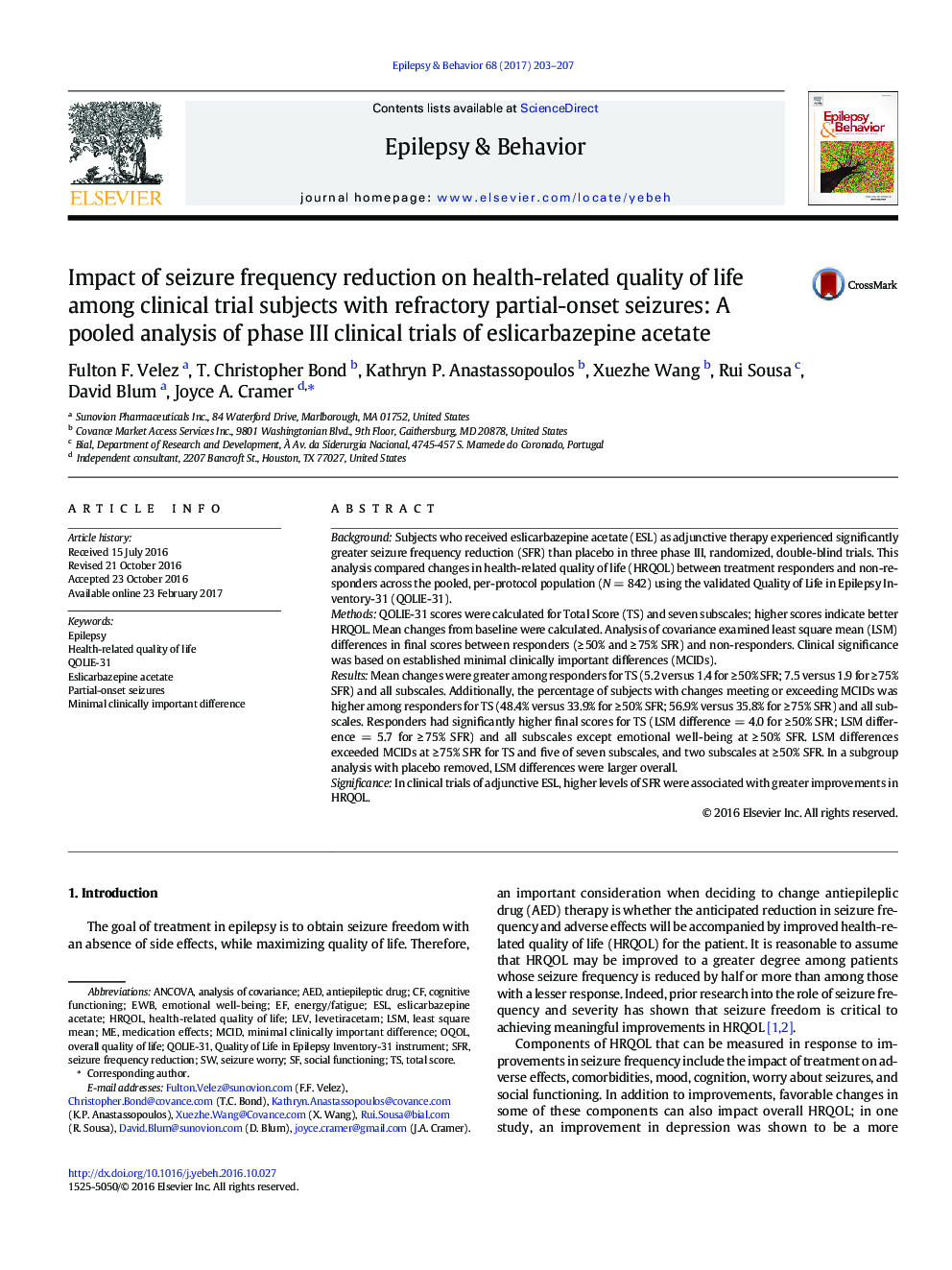| Article ID | Journal | Published Year | Pages | File Type |
|---|---|---|---|---|
| 5628055 | Epilepsy & Behavior | 2017 | 5 Pages |
â¢Clinically meaningful improvements in health-related quality of life were observed with a â¥Â 50% seizure frequency reduction.â¢Further improvement in health-related quality of life was observed with greater reductions in seizure frequency.â¢The efficacy of adjunctive eslicarbazepine acetate was associated with a positive impact on health-related quality of life.
BackgroundSubjects who received eslicarbazepine acetate (ESL) as adjunctive therapy experienced significantly greater seizure frequency reduction (SFR) than placebo in three phase III, randomized, double-blind trials. This analysis compared changes in health-related quality of life (HRQOL) between treatment responders and non-responders across the pooled, per-protocol population (N = 842) using the validated Quality of Life in Epilepsy Inventory-31 (QOLIE-31).MethodsQOLIE-31 scores were calculated for Total Score (TS) and seven subscales; higher scores indicate better HRQOL. Mean changes from baseline were calculated. Analysis of covariance examined least square mean (LSM) differences in final scores between responders (â¥Â 50% and â¥Â 75% SFR) and non-responders. Clinical significance was based on established minimal clinically important differences (MCIDs).ResultsMean changes were greater among responders for TS (5.2 versus 1.4 for â¥Â 50% SFR; 7.5 versus 1.9 for â¥Â 75% SFR) and all subscales. Additionally, the percentage of subjects with changes meeting or exceeding MCIDs was higher among responders for TS (48.4% versus 33.9% for â¥Â 50% SFR; 56.9% versus 35.8% for â¥Â 75% SFR) and all subscales. Responders had significantly higher final scores for TS (LSM difference = 4.0 for â¥Â 50% SFR; LSM difference = 5.7 for â¥Â 75% SFR) and all subscales except emotional well-being at â¥Â 50% SFR. LSM differences exceeded MCIDs at â¥Â 75% SFR for TS and five of seven subscales, and two subscales at â¥Â 50% SFR. In a subgroup analysis with placebo removed, LSM differences were larger overall.SignificanceIn clinical trials of adjunctive ESL, higher levels of SFR were associated with greater improvements in HRQOL.
